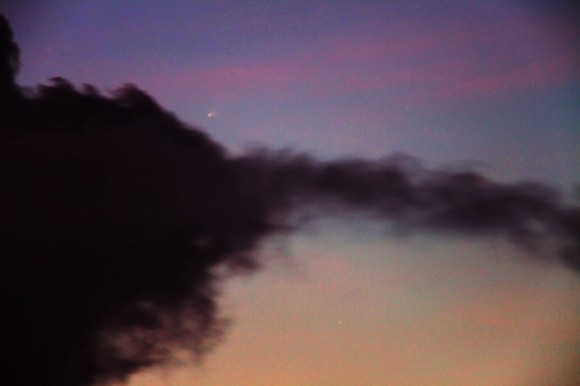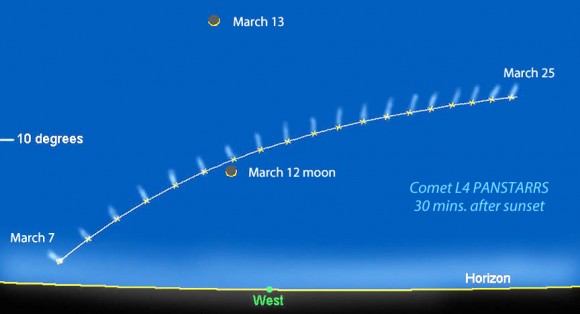Universe Today by Bob King on February 19, 2013

Comet L4 Panstarrs photographed from Australia at dawn on Feb. 17, 2013 with a telephoto lens. A bright head and short tail are visible. Credit: Joseph Brimacombe
2013 could turn out to be a comet bonanza. No fewer than three of these long-tailed beauties are expected to brighten to naked eye visibility. Already Comet C/2011 L4 PANSTARRS has cracked that barrier. Sky watchers in Australia have watched it grow from a telescopic smudge to a beautiful binocular sight low above the horizon at both dusk and dawn. A few have even spotted it without optical aid in the past week. Excited reports of a bright, fan-shaped dust tail two full moon diameters long whet our appetite for what’s to come.
Recent brightness estimates indicate that the comet could be experiencing a surge or “second wind” after plateauing in brightness the past few weeks. If the current trend continues, PanSTARRS might reach 1st or 2nd magnitude or a little brighter than the stars of the Big Dipper when it first becomes visible to northern hemisphere sky watchers around March 7. That’s little more than two weeks away!
Comet Panstarrs will make its first appearance for northern hemisphere sky watchers around March 7 low in the western sky after sundown. Notice that the comet gets no higher than 10 degrees – about one fist held at arm’s length – through much of the month. Illustration created using Chris Marriott’s SkyMap software
To read the rest of this story visit Universe Today



